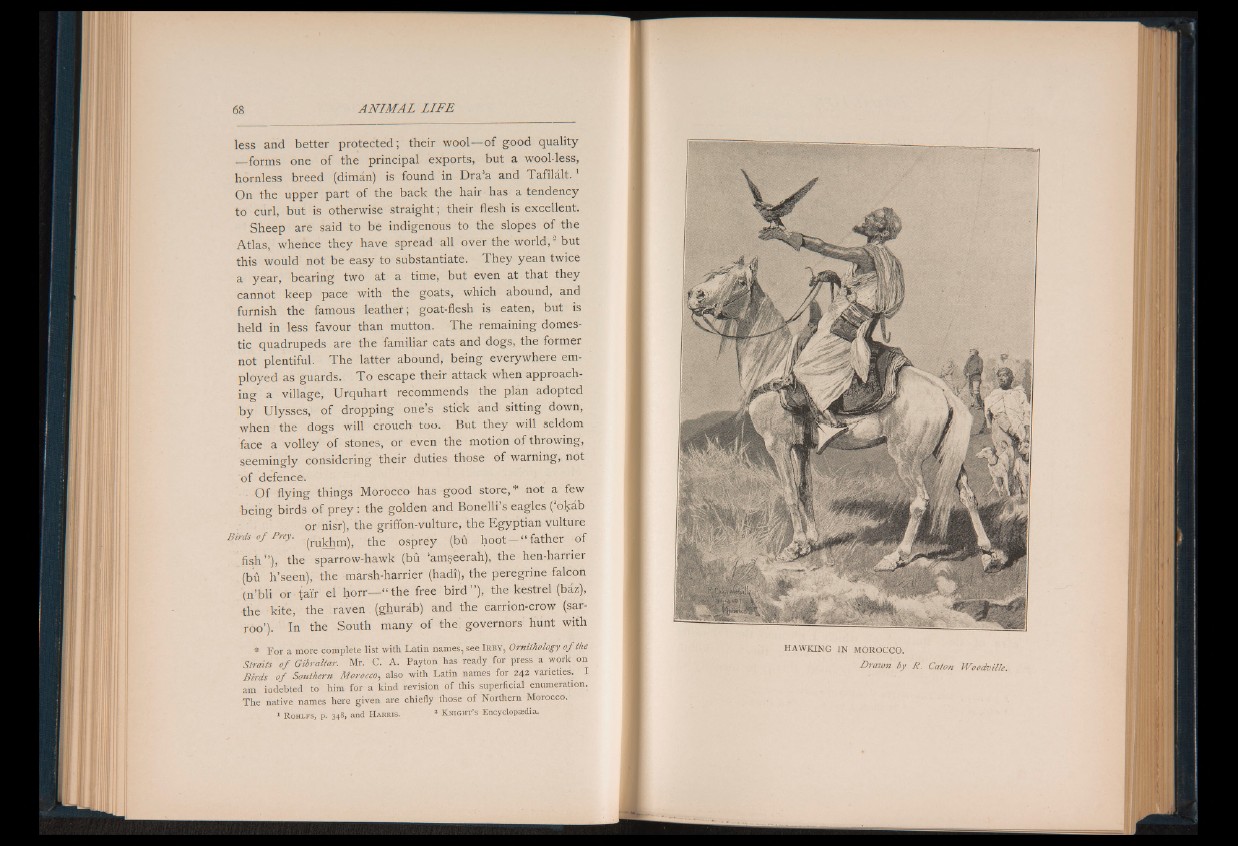
less and better protected; their wool— of good quality
— forms one of the principal exports, but a wool-less,
hornless breed (diman) is found in Dra’a and Ta fila lt.1
On the upper part of the back the hair has a tendency
to curl, but is otherwise straight; their flesh is excellent.
Sheep are said to be indigenous to the slopes of the
Atlas, whence they have spread all over the world,3 but
this would not be easy to substantiate. They yean twice
a year, bearing two at a time, but even at that they
cannot keep pace with the goats, which abound, and
furnish the famous leather; goat-flesh is eaten, but is
held in less favour than mutton. The remaining domestic
quadrupeds are the familiar cats and dogs, the former
not plentiful. The latter abound, being everywhere employed
as guards. To escape their attack when approaching
a village, Urquhart recommends the plan adopted
by Ulysses, of dropping one’s stick and sitting down,
when the dogs will crouch' too. But they will seldom
face a volley of stones, or even the motion of throwing,
seemingly considering their duties those of warning, not
of defence.
Of flying things Morocco has good store,* not a few
being birds of p r e y : the golden and Bonelli’s eagles (’okab
or nisr), the griffon-vulture, the Egyptian vulture
Birds Of Prey, the osprey (bu hoot— “ father of
fish” ), the sparrow-hawk (bu ‘amseerah), the hen-harrier
(bu h’seen), the marsh-harrier (hadi), the peregrine falcon
(n’bli or tair el horr— “ the free b ird” ), the kestrel (baz),
the kite, the raven (ghurab) and the carrion-crow (sar-
roo’). In the South many of the governors hunt with
* For a more complete list with Latin names, see Irby, Ornithology o f the
Straits o f Gibraltar. Mr. C. A. Payton has ready for press a work on
Birds o f Southern Morocco, also with Latin names for 242 varieties. I
am indebted to him for a kind revision of this superficial enumeration.
The native names here given are chiefly those of Northern Morocco.
1 R o h l f s , p . 3 4 8, an d H a r r i s . 1 K n i g h t ’s E n c y c lo p e d ia .
HAWKING IN MOROCCO.
Drawn by R. Caton IVoodville.